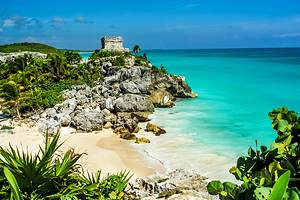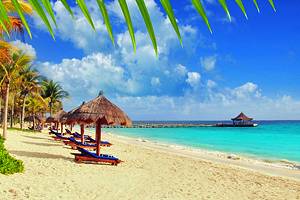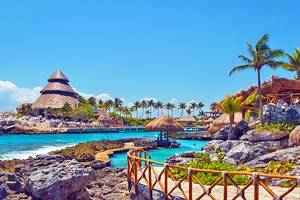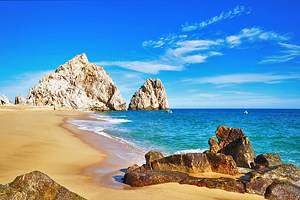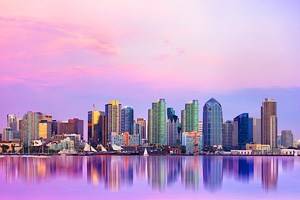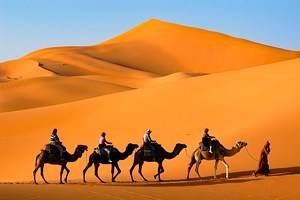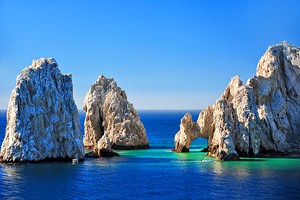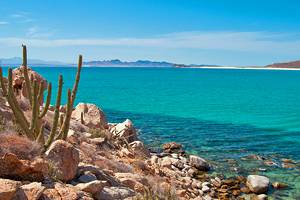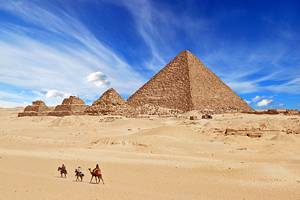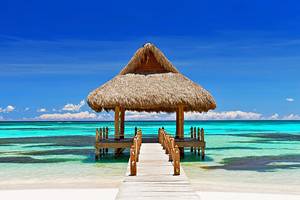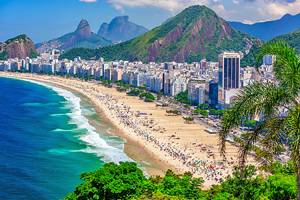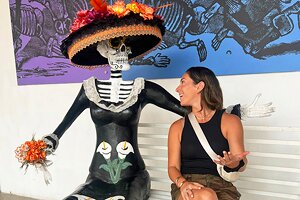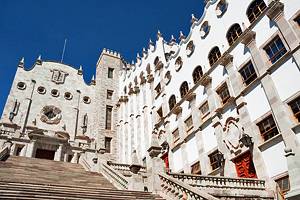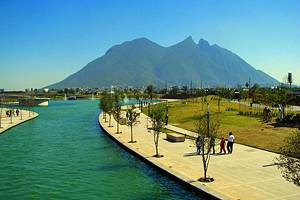Mayan Ruins in Mexico
With thousands of years of history in its rearview mirror, Mexico has some spectacular ancient ruins. The country has been home to dozens of indigenous tribes over the centuries, but few are as well known as the Maya.

The Maya civilization was a Mesoamerican culture whose empire stretched from what is now southern Mexico through Guatemala, Belize, Honduras, and El Salvador. They built hundreds of impressive cities along an intricate network of roads, and ruled the region for hundreds of years. They were master mathematicians, astronomers, artists, and farmers.
Today, their culture still thrives in many remote communities in Mexico and the Mayan language is still alive and well in this part of the country.
Most of their cities were abandoned by the year 900, but what they left behind were remarkable clues to uncovering the details of their history. Many travelers have likely heard of their major cities, like Chichen Itza and Tulum. But believe it or not, there are dozens upon dozens of Mayan ruins scattered all across Mexico's southern states, from Quintana Roo and the state of Yucatan, to Campeche, Chiapas, and even Tabasco.
To understand the Mayan culture is to really step into their shoes and walk their ancient streets. Discover the best places to visit for this with our list of the top Mayan ruins in Mexico.
Chichén Itzá

It's impossible to talk about Mexico's Mayan ruins and leave out Chichen Itza. One of the New Seven Wonders of the World, Chichen Itza is known around the world, and its image is one of Mexico's most recognized.
Located in the state of Yucatan, part of Mexico's Yucatan Peninsula, Chichen Itza was a thriving Mayan city that dates back to around the 5th century. It was one of the largest cities in the Mayan world, spread over approximately two square miles. It bustled as a hub of commerce and had residences, religious monuments, and even its own suburbs.
One of the highlights of Chichen Itza is El Castillo, a mathematically and scientifically designed step pyramid that is the best manifestation of the Mayans' understanding of astronomy. There are 365 steps (one for each day of the year), and twice a year on the spring and autumn equinoxes, a shadow appears on the pyramid that takes the shape of a serpent – a tribute to the most important Mayan god, Kukulcan, a feathered serpent.

The best way to visit Chichen Itza is to arrive early. Trust me on this. It is the most-visited Mayan site in the world, which means thousands of tourists visit each day. The park opens at 8am, so plan to arrive even before the gates open. You'll be thankful for this advice, too, when you see how hot it can get during the afternoon.
After exploring Chichen Itza, stop by the town of Valladolid, a charming Pueblo Magico that is along the route between Chichen Itza and Cancun. Believe it or not, Valladolid is one of the most underrated foodie spots in Mexico, so if you're hungry after Chichen Itza, this is a great place to stop. Yum Ka'an El Buen Sabor is one of the best restaurants in Valladolid to try typical Mayan recipes.
Tulum

Almost as recognizable as Chichen Itza are the coastal ruins of Tulum. The image of its largest structure, El Castillo, is iconic of the destination: perched on a cliff overlooking the magnetic turquoise Caribbean Sea.
It is one of the most visited sites in Mexico, with more than two million visitors per year. The original name of the site was Zama, which means sunrise. It's no wonder why - the sunrises here are spectacular and certainly worth the early wake-up call to experience.
At its height, around the 13th century, the city was a gateway to connect the Yucatan Peninsula with the people of Honduras and other places in the Gulf of Mexico.
Be sure to bring a bathing suit when visiting this site. The sugar-colored sand beneath the ruins is a popular spot to take a dip after touring the ancient city.
Author's Tip: Purchase a combo ticket, which includes a tour of the ruins and then the opportunity to snorkel along the beach below. Plus, the views of the ruins from the water are spectacular. Afterward, stop by the restaurant Ojo de Agua for delicious healthy food like salads, fruit bowls, tacos, and ceviche. The tropical ceviche is absolutely delicious with tuna, avocado, mango, green apple, lemon, and pineapple juice.
Read More: Visiting Tulum: Things to See & Do
Coba

Unlike its neighbors, Chichen Itza and Tulum, Coba has drifted relatively under the radar in terms of popularity. That's because it wasn't open to the public until the 1970s because the surrounding jungle was too thick to penetrate.
Today, only a small percentage of the site has been excavated, but it is one of the largest Mayan cities, spanning about 30 square miles. Bicycles are available for rent to explore the four square miles that are open to the public.
What's cool about Coba is that it is one of the last remaining archaeological sites in Mexico that visitors can still climb. The pyramid to scale is Nohoch Mul, the main structure, which is ascended via steep, slippery stone steps. It's worth it for the view, though, which spans miles in every direction out over thick, green jungle.

Coba also has a few cenotes surrounding it, which are excellent additions to a day trip. Cool off from the heat and humidity in Multum-Ha, Tankach-Ha, and Choo-Ha, all of which are a close drive from Coba.
Address: Carretera Federal Tulum 307, 77793 Cobá, Q.R., Mexico
Palenque

Deep in the mist-shrouded jungles of the state of Chiapas lies one of Mexico's most impressive Mayan cities. The first written account of Palenque dates back to the 16th century, but its history dates back to about the 3rd century.
It is not the largest Mayan city, but it is one of the most important due to its sheer volume of inscriptions - a recorded history that has helped researchers truly understand the details of Mayan history and culture.
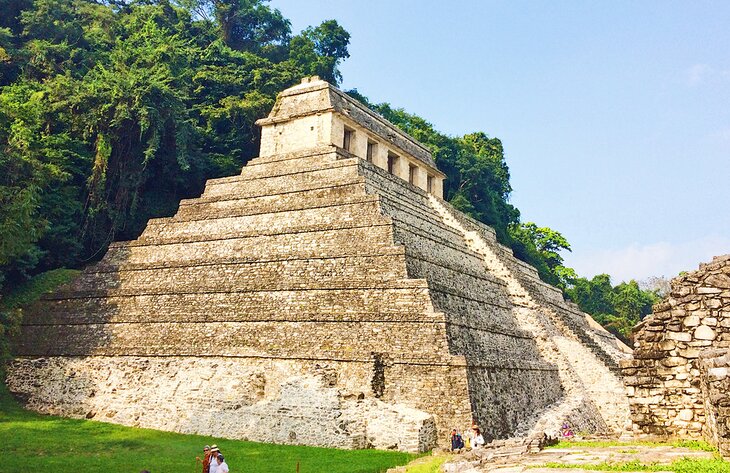
The site is peppered with hundreds of ruins which, while a stony gray now, were once vibrantly colored with reds, blues, and yellows. The most impressive structure is the Temple of the Inscriptions, which contains hundreds of hieroglyphics. The entire site was named a UNESCO World Heritage Site in 1987.
One of the best ways to see Palenque is to spend the night in El Panchan. El Panchan is a small backpacker village with cabanas to rent, as well as a restaurant. When I did my backpacking tour of southern Mexico, I spent a night in El Panchan and made some wonderful friends who were also traveling solo. We all decided to take a day trip to Cascadas Roberto Barrios, beautiful waterfalls located not far from Palenque.
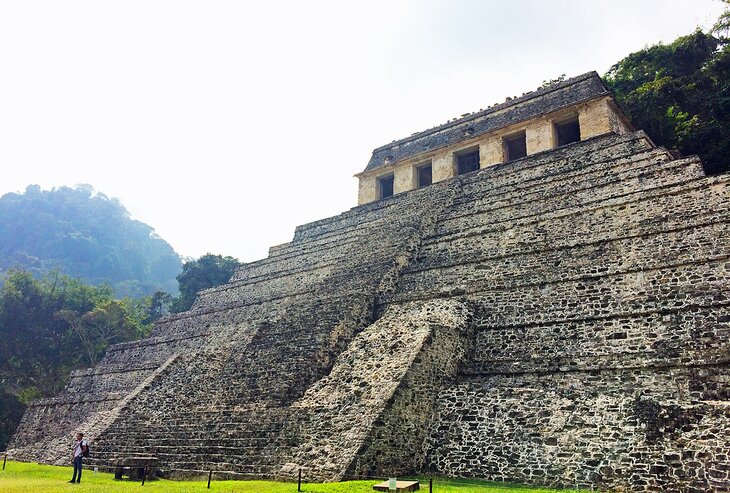


Address: Carr. Zona Arqueológica " Palenque " Km. 6.5, 29960 Palenque, Chis., Mexico
Calakmul
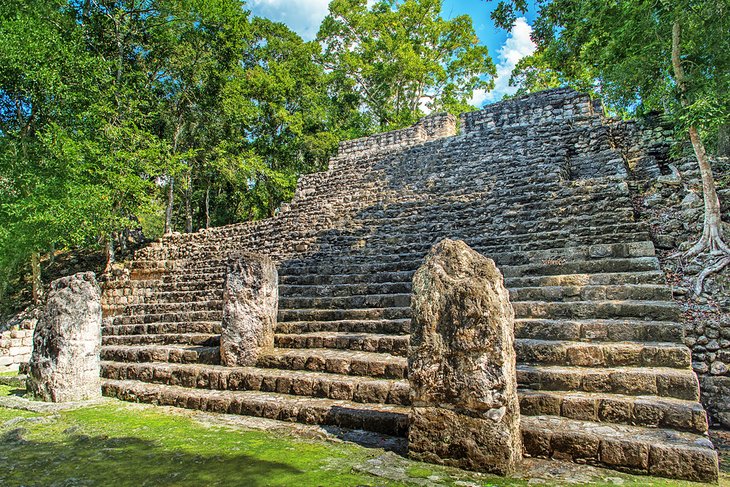
For more than 1,200 years, the city of Calakmul was an integral part of the Mayan world. Today, the site is located within the state of Campeche on more than 7,000 acres of World Heritage property within the Calakmul Biosphere Reserve.
The entire site is shrouded in thick, tropical forest - the second largest tropical forest in the Americas after the Amazon. In fact, the jungle is so thick that Calakmul remained unexplored and untouched for centuries. It only became a World Heritage site in 1993.
At its height, around the 6th century, approximately 65,000 people lived in the city. Its biggest rival was Tikal, just across the border in Guatemala. The most important structure at the site is The Great Pyramid, whose base spans five acres and whose peak rises 174 feet. It is the tallest pyramid in the Yucatan and, yes, you can still climb it.
Fun fact: On a clear day climbers can see the neighboring site of El Mirador in Guatemala.
Bonampak
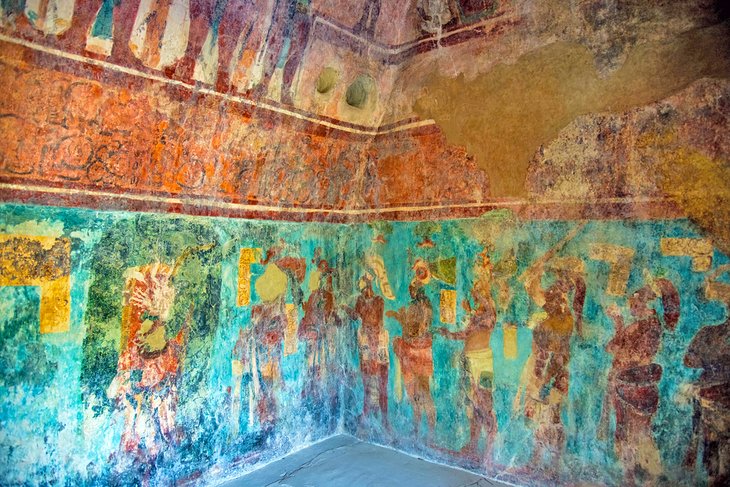
The name "Bonampak" translates to "painted walls," which could not be a more fitting title for this Mayan site in Chiapas. The main structure of the archaeological site is quite literally splashed with vibrant, colorful murals. In fact, these are the most well-preserved murals in the entire Mayan world.
Founded around AD 580, the city used the Usumacinta River to trade with other famous Mayan cities like Yaxchilan and Piedras Negras.
Bonampak remains slightly off the tourist trail because it's a bit of a hike to get to. The site is about 2.5 hours from Palenque down a narrow road through the jungle. But visitors are rewarded with a relatively intimate experience surrounded by stunning visuals. The murals tell stories of Mayan customs, from celebrations and sacrifice to music and war.
The paintings themselves date back more than 1,000 years and are heavily protected, but visitors can still see them from a ramp inside the doorway.
Ek' Balam

Ek' Balam is a city that was mysteriously banned right after its peak in the 8th century. Still very much hidden by jungle, the gorgeous site features pyramids, a ball court, and, most notably, an Acropolis.
At the top of the Acropolis is the main pyramid of Ek' Balam, which features a massive jaguar mouth (Ek Balam means "the black jaguar"), stucco skulls, winged shaman figures, and other decorations. Known as El Torre, it is one of the largest Mayan structures in the Yucatan, measuring more than 500 feet long and 200 feet wide, with a height of 100 feet.
The Tower holds the tomb of the ruler Ukil-Kan-Lek-Tok, who was in power at the city's height in AD 800.
The city functioned for more than 1,000 years, and today only the center of the city has been excavated. The entire settlement covered around 4.6 square miles.
Uxmal

Just outside the city of Merida in the state of Yucatan stands this ancient Mayan city that was once home to 20,000 people. The city's name translates to "Thrice Built," which refers to its tallest structure, The Pyramid of the Magician, which was built on top of existing pyramids.
The city is an important stop on the Ruta Puuc, which is a driving road that connects neighboring Mayan cities. Three related cities are Kabah, Labna, and Sayil. Puuc refers to both a region and a style of architecture.
Uxmal was at its peak around the 10th century. In the 15th century, it was abandoned.
Today Uxmal is a UNESCO World Heritage Site that spans about 150 acres and includes many structures that visitors are able to climb.

You could visit Uxmal either with a guide or on your own. I visited on my own, and I loved how empty the park was. This gave me ample time to explore things at my leisure and wander wherever I wanted to go. On the flip side, having a guide does offer a more in-depth explanation of the history and culture of Uxmal. It's up to you which way you want to play it.
If you have a car, it's pretty easy to visit some of the other ruins along the Ruta Pu'uc. Kabah is about 18 kilometers from Uxmal and has some very beautiful structures still intact, like the Palace and the Palace of Masks.

Becán

If you thought Chichen Itza was impressive, just wait until you feast your eyes on Becan. Located in the state of Campeche, Becan is one of several Mayan sites near Calakmul, and is one of the most impressive, yet thoroughly under-visited.
The site sits on approximately seven acres, where 20 structures are open to the public. The massive pyramids are what set this site apart, though they allegedly were built for show more than function. Case in point: the presence of many fake stairways and false entrances.
At the time of its height, Becan was a major capital of the Rio Bec province and was one of the many cities that battled Tikal in Guatemala. A moat surrounds the city, and there is evidence of walls and tunnels.
Edzná
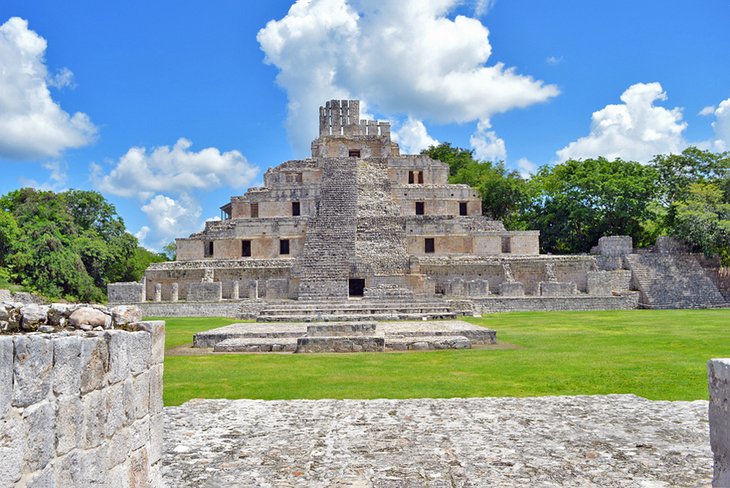
Located in the northern part of the state of Campeche, Edzna is a remarkable Mayan site that is far less trafficked than other sites in the region.
It is marked by its main temple, which sits on a 130-foot platform, known as the Gran Acropolis. It also has a ball court, which is still wonderfully preserved. The city was abandoned around the year 1,500, but historians believe that it could have been inhabited as early as 600 BC. It is another example of Puuc-style architecture.
Another important structure is the Temple of the Masks, which wasn't uncovered until 1988. The building has two masks at its base: one representing the Sunrise God and the other the Sunset God.
The city was at its peak between AD 400 and 1000 when about 25,000 inhabitants lived there.
Yaxchilán
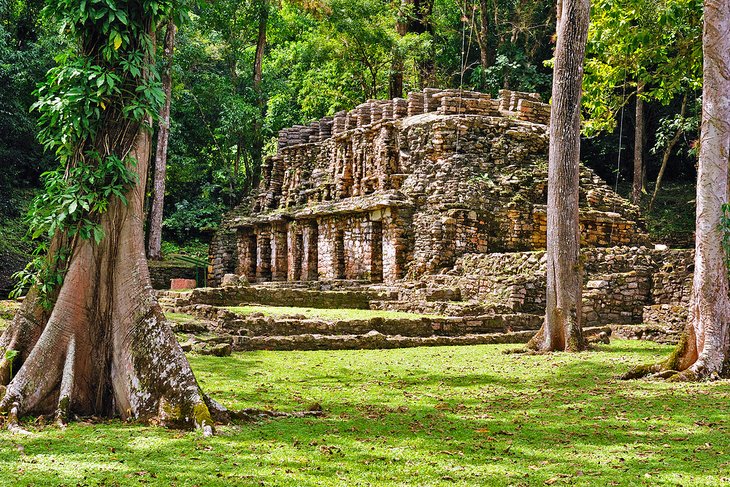
Journeying to Yaxchilan is really like stepping into an Indiana Jones adventure. Reaching the site on the Usumacinta River in Chiapas requires a colectivo or bus to Frontera Corozal, where travelers can catch a boat to the ruins. You can DIY, but most visitors opt for a tour to alleviate the stress of negotiating boat prices.
But the adventurous spirits are rewarded with a truly memorable experience. The jungle city was once a large settlement that often was at war with nearby Palenque. There are more than 120 buildings that make up three complexes: the Great Plaza, the Grand Acropolis, and the Small Acropolis.
What makes Yaxchilan memorable are the vast amounts of stelae, carvings, and mural paintings. In fact, it has some of the best carvings of any Mayan city. To visit Yaxchilan is to truly embark on an adventure that will stay with you for a long, long time.
Kohunlich

A trip to the very depths of the state of Quintana Roo rewards travelers with so much, from the glittering waters of Laguna Bacalar, to the pristine coast of the Costa Maya. Tucked within the jungle is another secret: the ruins of Kohunlich.
Surrounded by dense jungle, echoing with the shrieks of howler monkeys, the ruins are blanketed in moss and grass, seeming to blend into the nature around it. It really is a mesmerizing piece of Mayan history.
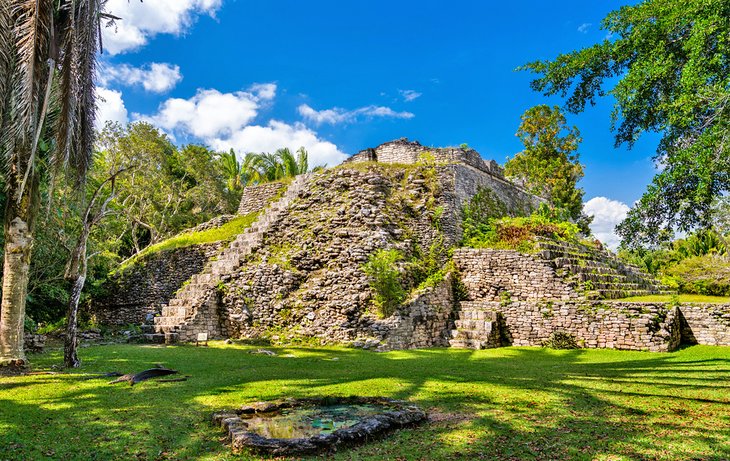
The 21-acre site largely remains unexcavated. It wasn't a major capital but is believed to be a stopover trade city between capitals. The most impressive structure here is the Temple of the Masks, a structure lined with massive stucco masks. There is also the building known as 27 Steps, a climbable structure with a wonderful view from the top over the jungle.
One of my favorite places to stay in this part of Mexico is the Explorean Kohunlich, a four-star, all-inclusive resort named for these very Mayan Ruins. This special hotel is tucked deep within the jungle, a quick drive from the ruins, and offers gorgeous bungalow-style rooms and a beautiful pool.
Address: Carretera Federal 186 (Chetumal-Escárcega, 77981 Chetumal, Q.R., Mexico
El Rey

Let's say you're traveling to Cancun but do not want to take an entire day to go see ruins. That is absolutely doable. Cancun's resort-strewn Hotel Zone actually has an archaeological site right there, so travelers never have to go very far from their resorts to soak up some Mayan heritage.
The El Rey ruins at the southern end of the Hotel Zone were once part of a temple complex that dates back more than 1,000 years. Today the site has 47 structures, and the complex takes no more than half hour to explore. Most people take a taxi to reach the ruins, but you can also sign up for a tour.
What's great about El Rey is that you'll hardly ever find the site crowded. Most tourists are on the buses headed to destinations like Chichen Itza, Tulum, and Coba. To visit El Rey takes practically no time, and you'll be able to soak up a little bit of culture while still being able to sun at the pool – all before the rest of the hotel guests get back from their longer day trips.
Address: Hotel Zone, 77500 Cancún, Quintana Roo


